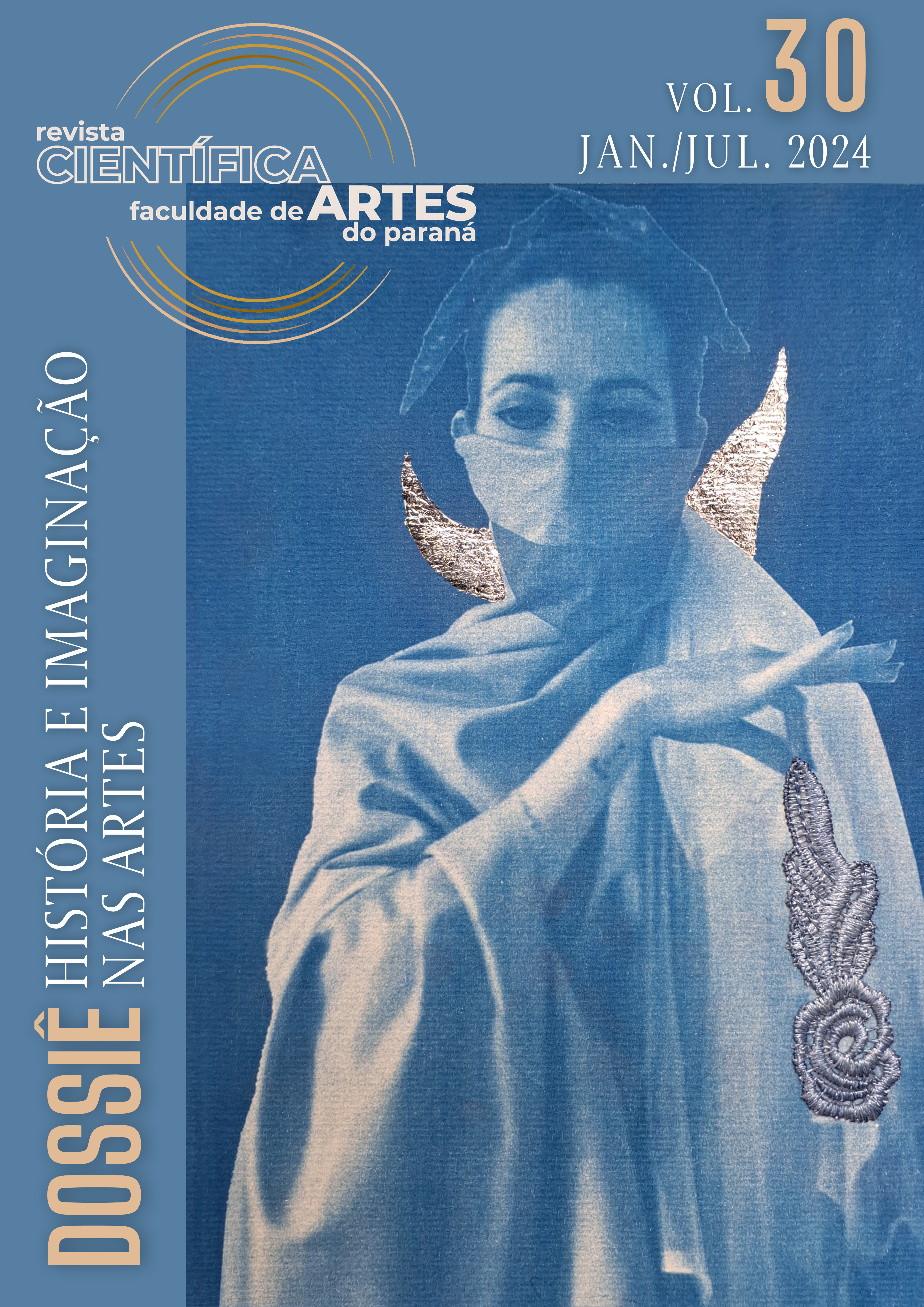The stylized imagination in Werner Herzog's documentary cinema
DOI:
https://doi.org/10.33871/19805071.2024.30.1.8812Keywords:
Werner Herzog, Imagination, Ecstatic Truth, Documentary FilmAbstract
This research aims to analyze how the German director Werner Herzog uses imagination to compose his documentary mise-en-scène to build moments of sublimity in his narrative, called Ecstatic Truth. Methodologically, we use the picture and sound approach (iconic analysis), systematized by Aumont and Marie (2004) and applied to the documentaries The Great Ecstasy of Woodcarver Steiner (1974) and The Dark Glow of the Mountains (1984). In both films, the protagonists engage in adventure sports that emphasize the importance of physical movement, a significant element in Herzog's narrative. From this debate, imaginative forms emerge in Herzog with constant use of rehearsal, repetition, and self-reflection, characteristics used for his characters to reach the Ecstatic Truth.
Downloads
References
AMES, Eric; HERZOG, Werner. Werner Herzog: Interviews. Mississippi: University Press of Mississippi, 2014.
AMES, Eric. Ferocious Reality: Documentary according to Werner Herzog. Minneapolis: University of Minnesota Press, 2012.
AUMONT, Jacques; MARIE, Michel. A análise do filme. 3.ed. Lisboa: Texto & Gráfica, 2004.
COOK, Roger. The Ironic Ecstasy of Werner Herzog: Embodied Vision in The Great Ecstasy of Woodcarver Steiner. In: PRAGER, Brad. (Org). A Companion to Werner Herzog. Chichester (UK): Willey Blackwell, 2012.
CRONIN, Paul; HERZOG, Werner. Werner Herzog - A Guide for the Perplexed: Conversations with Paul Cronin. London: Faber & Faber, 2014.
DUERFAHRD, Lance. Tantrum Love: The Fiendship of Klaus Kinski and Werner Herzog. In: PRAGER, Brad. (Org). A Companion to Werner Herzog. Chichester (UK): Willey Blackwell, 2012.
FRAZÃO, Jéssica. A representação da realidade no cinema documentário: Verdade e Imaginação pelos cineastas do Novo Cinema Alemão. In: PENAFRIA, Manuela; et al. Revisitar a Teoria do Cinema. Teoria dos Cineastas. Vol. 3. Covilhã: Labcom, 2017.
HERZOG, Werner. The Minnesota Declaration - Truth and fact in documentary cinema "LESSONS OF DARKNESS" (1999). Disponível em: < https://www.wernerherzog.com/text-by-werner-herzog.html >. Acesso em: 12 fev. 2024.
HERZOG, Werner. Conquista do inútil. Trad. Renata Dias Mundt, São Paulo: Martins Fontes, 2013.
HERZOG, Werner. Caminhando no gelo. Trad. Lúcia Nagib. Rio de Janeiro: Paz e Terra, 1982.
JOHNSON, Laurie. Werner Herzog’s Romantic Spaces. In: PRAGER, Brad. (Org). A Companion to Werner Herzog. Chichester (UK): Willey Blackwell, 2012.
MACKENZIE, Scott. Film Manifestos and Global Cinema Cultures: a Critical Anthology. Berkeley: University of California Press, 2014.
NAGIB, Lúcia. Werner Herzog: o cinema como realidade. São Paulo, Estação Liberdade: 1991.
PEUCKER, Brigitte. Herzog and auteurism: Performing authenticity. In: PRAGER, Brad. (Org). A Companion to Werner Herzog. Chichester (UK): Willey Blackwell, 2012.
PRAGER, Brad. The cinema of Werner Herzog: aesthetic ecstasy and truth. London: Wallflower press, 2007.
WALLER, Gregory A. “The Great Ecstasy of the Woodsculptor Steiner": Herzog and the "Stylized" Documentary. Film Criticism. Vol. 5, No. 1. Fall, 1980.
WAUGH, Thomas. Acting to play oneself: Notes on performance in documentary. In: Right to Play Oneself: Looking Back on Documentary Film. Minnesota: University of Minnesota Press, 2011.
Referências audiovisuais
Fitzcarraldo, direção: Werner Herzog, Alemanha Ocidental, 1982.
Gasherbrum – A montanha luminosa, direção: Werner Herzog, Alemanha, 1984.
Meu melhor inimigo, direção: Werner Herzog, Alemanha, 1999.
O grande êxtase do Entalhador Steiner, direção: Werner Herzog, Alemanha, 1974.
O pequeno Dieter precisa voar, direção: Werner Herzog, Alemanha,1997.
Sinais de vida, direção: Werner Herzog, Alemanha Ocidental,1968.
Tokyo-Ga, direção: Wim Wenders, Alemanha Ocidental, Estados Unidos, 1985.
Visita ao inferno, direção: Werner Herzog, Áustria e Reino Unido, 2016.
Downloads
Published
How to Cite
Issue
Section
License
The authors retain the copyright, when licensing their production in Revista Científica/FAP, which is licensed under a Creative Commons license. When submitting the article, and upon acceptance, the author assigns his copyright for publication in that journal.
Readers can download, print and use the articles published in the journal, as long as there is always an explicit mention of the author (s) and the Revista Científica/FAP, no changes to the original work are allowed. When submitting an article to Revista Científica/FAP and after its being accepted for publication, the authors allow, without remuneration, to pass the following rights to the Journal: the first edition rights and the authorization for the editorial team to transfer, according to their judgment, this article and its metadata to indexing and reference services.


